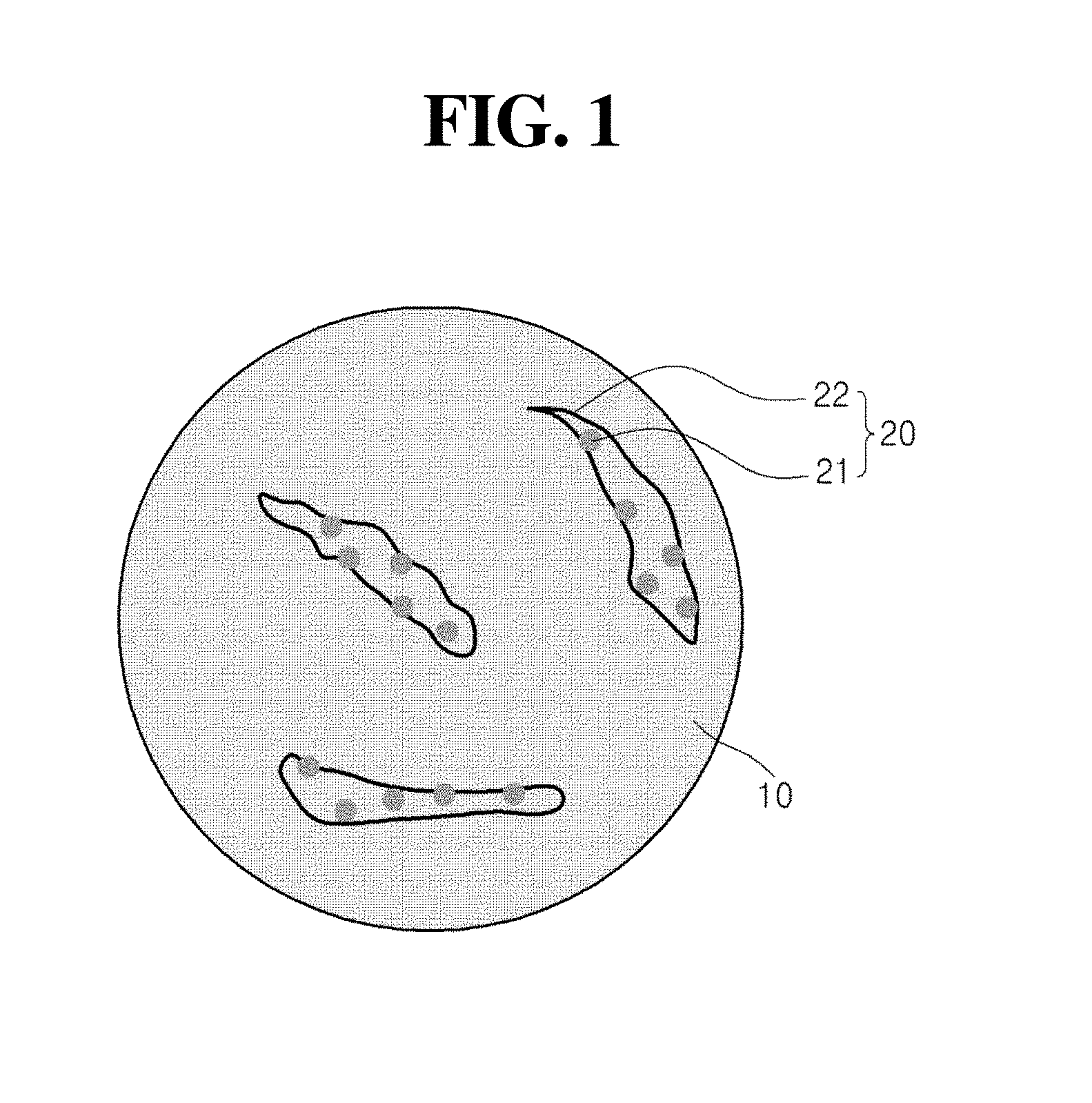Carbon-silicon composite and manufacturing method thereof
a technology of carbon-silicon composite and manufacturing method, which is applied in the direction of secondary battery servicing/maintenance, cell components, batteries, etc., can solve the problems of deterioration of conductivity between active materials, deterioration of cycle properties of silicon, and obstacle to practical use, so as to improve the discharge stability of secondary batteries.
- Summary
- Abstract
- Description
- Claims
- Application Information
AI Technical Summary
Benefits of technology
Problems solved by technology
Method used
Image
Examples
experimental example
[0125]Charge and discharge properties of the secondary batteries manufactured by Example 1 and Comparative Examples 2 and 3 were tested under the following conditions.
[0126]When it is assumed that 300 mA per 1 g is 1 C, charge conditions were controlled by a constant current at 0.2 C up to 0.01V, and a constant voltage at 0.01V up to 0.01 C, and discharge conditions were measured by the constant current at 0.2 C up to 1.5V.
[0127]FIG. 4 is a graph illustrating results obtained by measuring discharge capacity according to cycle number on secondary batteries manufactured by Example 1 and Comparative Examples 2 and 3. Table 1 below shows results of initial charge capacity (mAh / g), and results of charge capacity retention rate (%) after 10 cycles obtained by converting a charge capacity retention rate after 10 cycles in relation to the initial charge capacity, into percent (%).
TABLE 1ComparativeComparativeExample 1Example 2Example 3Initial Charge674428290Capacity(mAh / g)Charge94.597.995.0...
PUM
| Property | Measurement | Unit |
|---|---|---|
| mass particle size distribution | aaaaa | aaaaa |
| cumulative mass particle size distribution | aaaaa | aaaaa |
| diameter | aaaaa | aaaaa |
Abstract
Description
Claims
Application Information
 Login to View More
Login to View More - R&D
- Intellectual Property
- Life Sciences
- Materials
- Tech Scout
- Unparalleled Data Quality
- Higher Quality Content
- 60% Fewer Hallucinations
Browse by: Latest US Patents, China's latest patents, Technical Efficacy Thesaurus, Application Domain, Technology Topic, Popular Technical Reports.
© 2025 PatSnap. All rights reserved.Legal|Privacy policy|Modern Slavery Act Transparency Statement|Sitemap|About US| Contact US: help@patsnap.com



